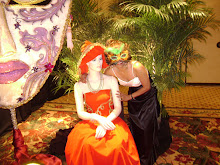Too may times we underestimate the role of culture and its impact on relationships, marriage and perhaps even more so in organizations - the latter being organizational culture.
Before reading any further, take a moment and think about a marriage or a relationship where two different cultures exist. Was it not a learning process for the people involved to understand each other, their perceptions, beliefs and values? It certainly is. I myself reflect as both my husband and I are from different cultural backgrounds and it is funny to look back upon the times when I tried understanding him from my terministic screens which obviously differed from his and so with time we began to understand different vocabulary, figurative expressions, behaviors (interpreting silence versus verbal responses) and so on. Not understanding the other’s body language or misinterpreting actions often leads to conflicts and the same goes for organizational culture.
Culture is a key element to harmony and success and I am prompted to write this piece as I experience the merger of two large companies. During the long transition process and working with so many different teams, interacting at different levels of the organization, I slowly begin to see that the organizational cultures of these companies are very different and I wonder when the two finally merge, what would be the culture that survives and would it be the best one for the future success of the new company. Obviously and more often, past mergers consistently shows that the culture of the acquiring company is the one that preserves but is it the smart thing or is it the easier solution?
Really, it is the easier solution because changing corporate culture is a tremendous job and it takes a lot of work but it can also bring great benefits - after all a corporation is its people and having people believing in a company’s vision and being able to associate with it at all levels, understanding how their role fits into and contributes to the vision is paramount to success.
A vision should never be seen only as some lovely statements to be displayed. Employees need to feel and see it in action from the top down. It needs to be part and parcel of their daily working lives and each objective that they own should be meshed into the company’s culture.
Every company has a formal and an informal culture and very often, as organizational consultants can relate to, it is the informal culture that really defines and tells what a company is. That is the real pulse of how employees feel and see the company they work with. I wonder how many organization have run diagnostics to assess the formal versus the informal culture. It is an interesting and worthwhile exercise for any company that truly wants to be successful and wants to see that its brand or culture is being lived and embraced by its people. It is what compels each individual to look for quality, to strive for flawless delivery, to seek effective and robust processes and to bring value each day in every way and hence create a strong and sustainable bottom line. It is strong corporate culture that sustains organizations amidst the ever changing dynamics of the external environment.
To really get a good understanding of organizational culture, it impact and its value, I suggest reading Corporate Culture - Illuminating the Black Hole by Jerome Want. But before you start reading, think of your organization’s culture and how it is perceived by the employees. Has it had impact on the success of the company? It is a culture that is highly talked about with pride? Does everyone know what the organizational culture is and does the leadership team exhibit the culture? What is your organization’s culture - Bureaucratic, Service, Political, Frozen, Predatory or New Age? Jerome Want does a great job at revealing the behaviors of these cultures and how they affect the success of a company.
Culture should never be underestimated. It drives the way we think and the way we behave!
How Much Is People Engagement Really Worth?
10 years ago




No comments:
Post a Comment